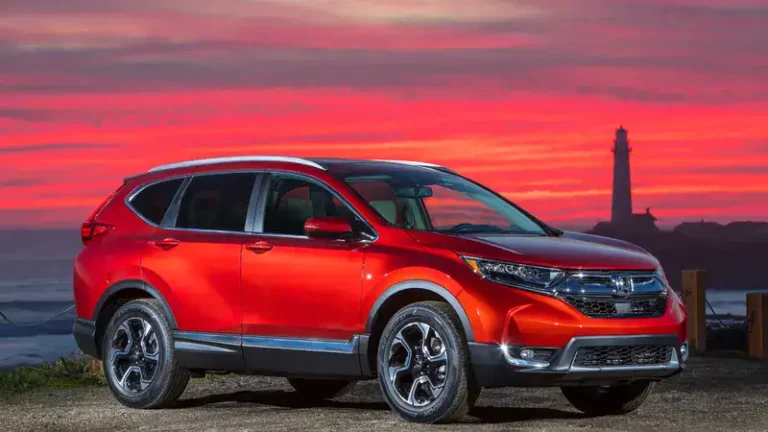The Honda CR-V Years to Avoid is a popular SUV loved for its reliability. However, some models have issues. Before buying, it’s important to know the Honda CR-V . This guide covers everything you need to make a safe choice in 2025. Therefore, stay with us to learn more about the models that disappointed many owners.
Common Problems in Some CR-V Models
Not all Honda CR-V models offer the same quality. Unfortunately, certain years faced serious problems. Transmission failure, engine issues, and faulty air conditioning top the list. Knowing these problems saves you from costly repairs later. Hence, always research before buying a used CR-V model. In 2025, market trends highlight reliability as the top buyer concern.
Transmission Failures in Early Models
Early CR-V models had major transmission problems. Owners often reported slipping gears and rough shifting. These issues usually showed up after a few years of use. Moreover, repairs for transmission problems can be expensive. It’s better to avoid affected models. This is a key reason why some models are on the Honda CR-V years to avoid list.
Engine Problems in 2015 and 2017 Models
The 2015 and 2017 models saw various engine complaints. For example, many owners reported excessive oil consumption. Engine vibrations were also common. These issues frustrated CR-V users. Furthermore, repair costs were often high and unexpected. Such engine problems made these models risky buys. Therefore, they easily fall under the Honda CR-V years to avoid category.
Air Conditioning System Failures
The air conditioning system was another weak spot in certain years. Owners faced leaking compressors and poor cooling. This often happened in the 2002-2006 models. Additionally, replacing the AC system costs a lot. These problems affected driving comfort. Consequently, buyers should avoid these CR-V models if they want reliability in 2025’s demanding market.
Specific Honda CR-V Years to Avoid
Not every model year has problems. Still, some are best left out of your buying list. Therefore, let’s check the Honda CR-V years to avoid. Knowing them helps you make a smarter decision. These are based on real customer reviews and expert reports. Moreover, the 2025 market favors models with proven durability.
2002 Honda CR-V
The 2002 Honda CR-V had serious transmission and AC issues. Many users complained about compressor failure. Some also faced transmission breakdowns after limited mileage. Repairing both problems is costly. This model brought headaches to many owners. Consequently, it’s clearly among the Honda CR-V years to avoid.
2007 Honda CR-V
The 2007 model had major engine and electrical problems. Reports of engine stalling were common. Electrical issues like door lock failures also troubled users. This model failed to deliver the expected reliability. Due to repeated complaints, it stands in the Honda CR-V years to avoid list. Therefore, buyers should be cautious with this one.
2011 Honda CR-V
The 2011 CR-V faced engine and brake issues. Owners experienced premature brake wear. Some also reported excessive oil consumption. This raised serious concerns among buyers. The repair costs for these problems were significant. Hence, experts suggest avoiding this model year. It remains a notable entry in the Honda CR-V years to avoid.
2015 Honda CR-V
The 2015 model became known for engine vibrations. Many drivers felt uncomfortable due to this issue. It also had problems with the CVT transmission. These faults led to high repair bills. As a result, customer satisfaction for this year dropped sharply. Thus, the 2015 version joins the Honda CR-V years to avoid.
2017 Honda CR-V
The 2017 model featured turbo engine problems. Oil dilution became a widespread issue. This led to poor engine performance. Some even faced complete engine failure. Therefore, the issue affected user confidence in the model. Because of this, it’s counted among the Honda CR-V years to avoid.
Why These Years Faced Problems
Design flaws often lead to recurring issues. Manufacturers sometimes fail to address them in time. The Honda CR-V years to avoid had common design and engineering defects. Transmission systems and engine designs were often the main cause. These defects caused expensive repairs. Therefore, buyers in 2025 should stay informed before purchasing.
Manufacturer Recalls and Complaints
Several affected CR-V models faced recalls. These recalls were related to safety and performance. Still, many owners reported repeated problems after fixes. Moreover, complaints on platforms like CarComplaints.com highlight these issues. The this gained bad reputations this way. Always check recall history before buying a CR-V in 2025.
Cost of Repairs for Problematic Models
Repairing common CR-V problems costs a lot. Transmission repairs can go beyond $3,000. Engine replacements cost even more. Additionally, air conditioning fixes also add up quickly. This makes the Honda CR-V years to avoid a risky purchase. Therefore, in 2025’s used car market, avoiding costly models is a smart financial move.
Impact on Resale Value
Problematic models lose their value faster. The Honda CR-V years to avoid often have poor resale prices. Consequently, buyers hesitate to pay good money for risky vehicles. This affects both sellers and buyers negatively. Reliable models keep their value longer. In 2025, resale trends show buyers prefer well-reviewed models.
How to Choose a Reliable Honda CR-V
Picking the right year is key to avoiding problems. Do detailed research before buying. Also, read customer reviews on trusted platforms. Check for any open recalls on the model. Consult mechanics about common issues. Avoid models listed under Honda CR-V years to avoid. This will ensure a better ownership experience in 2025.
Recommended Honda CR-V Model Years
Some Honda CR-V models stand out for reliability. The 2010, 2013, and 2016 models perform better. They have fewer complaints and proven track records. Experts often recommend these years. They avoid the major issues seen in other models. Therefore, in 2025, these years remain favorites in the used car market.
Buying from Certified Dealerships
Buy from certified dealerships whenever possible. They often offer warranty options. This protects you from unexpected repairs. Moreover, certified dealerships also inspect used vehicles thoroughly. This reduces the risk of buying a problematic model. Make sure your CR-V isn’t on the Honda CR-V years to avoid list. The 2025 market favors certified, inspected cars.
Conduct a Professional Inspection
A pre-purchase inspection is a wise step. Hire a professional mechanic to check the vehicle. They can spot hidden issues easily. This saves you from costly mistakes. Also, many CR-V problems are hard to notice without expert help. This helps avoid models linked to the Honda CR-V years to avoid.
Conclusion
The Honda CR-V remains a great choice in the SUV market. However, being aware of the Honda CR-V years to avoid is essential. Always check model history before buying. Moreover, stick with trusted model years for peace of mind. In 2025, market trends stress reliability and lower maintenance costs. Avoid risky models to save money and stress. Smart research leads to a better driving experience.



